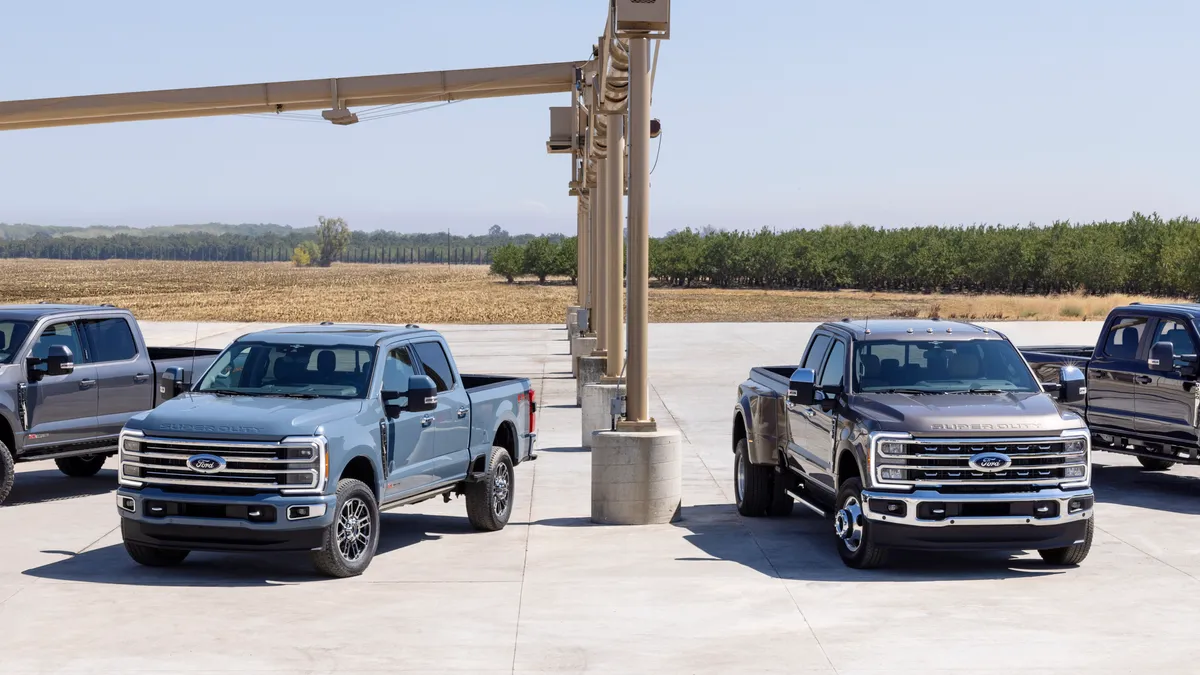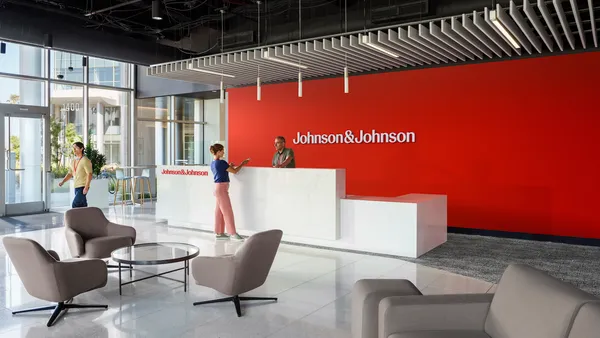Dive Brief:
- Ford is delaying construction on one of its Kentucky battery plants, executives announced during a Q3 earnings call Thursday.
- The move is part of a larger delay in $12 billion worth of EV investment as the automaker navigates a "more challenging" EV market, CFO John Lawler said during the call.
- The second Kentucky factory had been slated to begin production in 2026, but Ford and SK On executives haven't specified when the plant will now open, Ford spokesperson T.R. Reid said in an email. Ford's other Kentucky factory is still on track to open in 2025, Reid confirmed.
Dive Insight:
Ford's latest delay in its EV investment follows the company’s recent tumult in navigating the ongoing United Auto Workers strike and a slowing EV market.
While Ford and the UAW reached a tentative agreement to end the strike earlier this week, the more than six-week work stoppage has already caused financial damage to the automaker. Lawler noted on the call that the strike caused a loss of roughly $100 million in EBIT and trimmed approximately 80,000 units from production.
Ford also lost $1.3 billion on its Model e EV start-up during the quarter, "reflecting continued investment in our next-generation products and a more challenging market for our Gen 1 products," Lawler said.
"Given the dynamic EV environment, we are being judicious about our production and adjusting future capacity to better match market demand," the CFO told investors, adding that the company has also taken out some of its Mustang Mach-E production.
Ford first announced plans for the Kentucky plants in 2021, with $5.8 billion in planned investment between the two factories.
The announcement to delay the project comes a month after Ford paused construction on its $3.5 billion Michigan EV plant, stopping work "until we’re confident about our ability to competitively run the plant," Reid told The Detroit News at the time.
As automakers contend with the added expenses of manufacturing EVs, Ford is among those straining to cut both production and consumer costs.
"The dynamic changes in the market, pricing, adoption rates [and] regulations are forcing us to further reduce the cost of our EVs," CEO Jim Farley said on the Q3 call. "The key levers to deliver this competitive cost structure are scaling, vertical integration and batteries."
Farley noted the company is insourcing battery and inverter production, as well as enhancing its focus on the less expensive lithium iron phosphate battery model.
The automaker is also pushing to more strategically source components and better cooperate with suppliers on cost reduction and streamlining downstream supply. "We weren't really getting into redesigning the parts and getting the complexity out of the suppliers' manufacturing system," Farley said.
Ford is now working to reduce the number of parts in some of its models. In its F-Series trucks, Farley said the company has reduced parts complexity from 1.4 billion combinations to less than 1,000.
"It's going to be a battle between managing the top line as best we can, adjusting the supply of products relative to demand so that we can balance the pricing from that standpoint and then working like crazy to put whatever cost reductions we can on that Gen 1 vehicle through to the bottom line," Lawler said.












